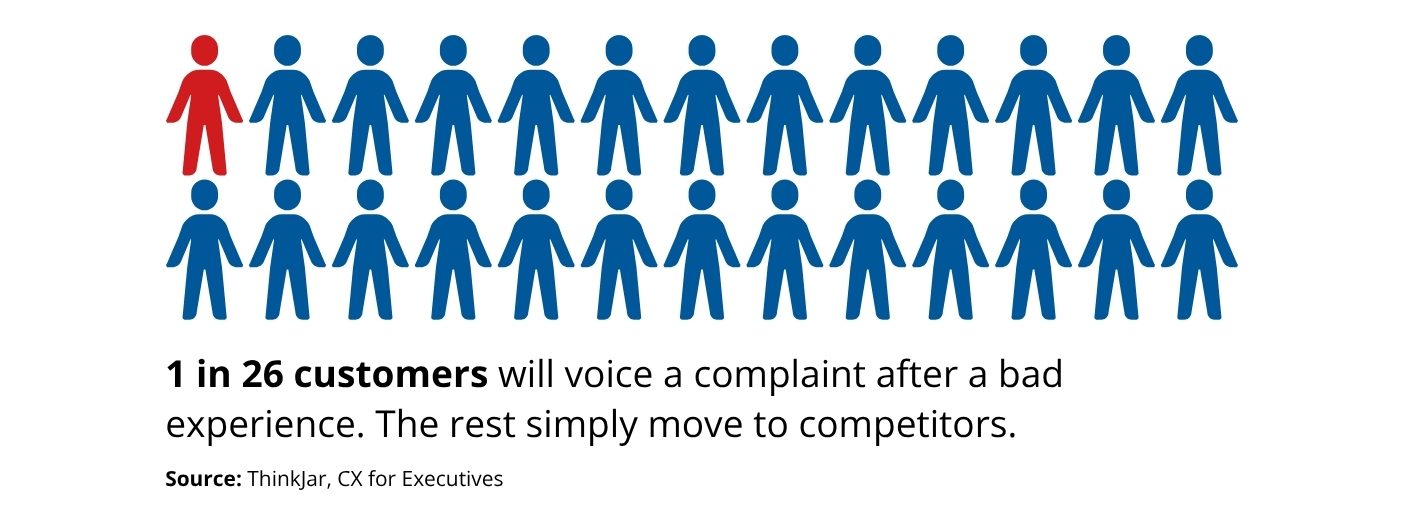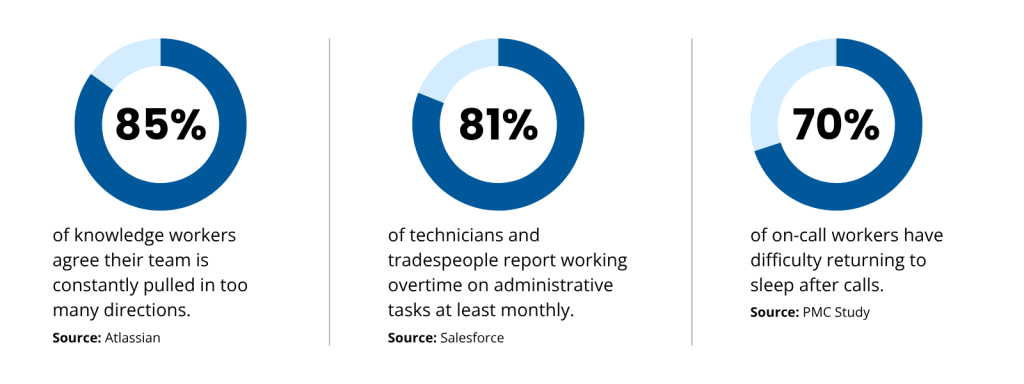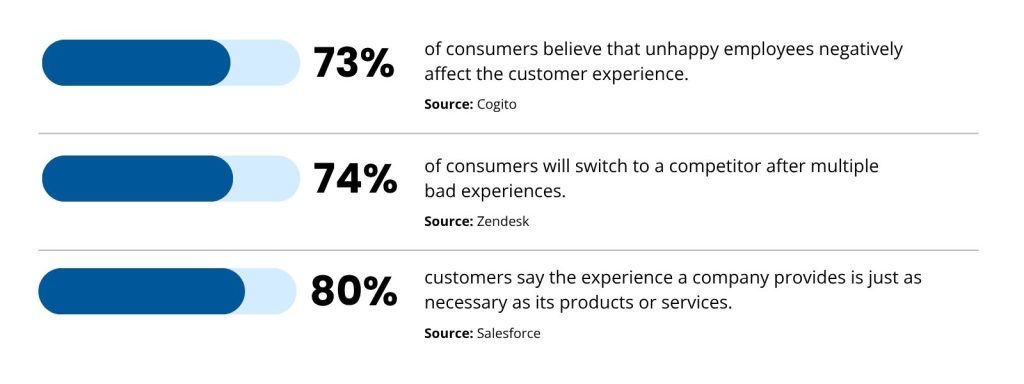A single missed call might not raise alarms, but it can quietly cost your business far more than you think. While it might seem like a minor oversight, that unanswered phone can trigger a cascade of problems that impact your bottom line, customer relationships, and team morale.
Consider this: 76% of customers who contact customer service do so over the phone. Phone calls remain one of the most direct, high-intent ways customers reach out, especially when something’s urgent. Yet, many businesses still treat missed calls like no big deal, despite the fact that every unanswered ring is a missed opportunity (often one that walks straight to a competitor).
The real problem? Most of this damage happens silently. You’ll never know about the frustrated customer who hung up after three rings, or the client with an urgent request who decided to call your competitor instead.
But it doesn’t have to. In this blog, we’ll break down what missed calls are really costing your business and how to take back control of your customer experience.
The Cost Of a Frustrated Customer
Missed calls don’t just lead to lost sales, they create lasting frustration for the people trying to reach you. And that frustration isn’t just emotional; it has measurable consequences.
A single negative interaction can erode trust, reduce lifetime value, and send loyal customers straight to your competitors. The worst part? Most of them won’t tell you—it all happens quietly in the background.
The customer experience crisis:
- 9.5 minutes is the average time customers spend trying to reach a human in automated phone systems.
- 50% of customers prefer talking to a real person over AI chatbots.
- 75% of customers said the inability to connect with someone from customer support would cause them to leave a brand.
- 80% of callers sent to voicemail don’t leave messages because they don’t expect a response.
What Happens When You Don’t Answer?
Here’s the most dangerous part: 85% of people whose calls go unanswered will not call back.
Even worse, only 1 in 26 customers will voice a complaint after a bad experience—the rest simply move to competitors.
This means you’re losing customers without even knowing it. No angry emails, no negative reviews— just silent defection to your competition.

The Emotional Toll on Your Brand
Customer experience isn’t just about solving problems, it’s about how you make people feel:
- 75% of consumers say a bad interaction with a business can ruin their entire day.
- 80% of customers consider the experience as important as the actual product or service.
- 46% of consumers will abandon a brand if employees aren’t knowledgeable.
The Cost of a Burnt Out Employee
It’s not just customers who pay the price for missed calls, your team feels it, too. When staff are constantly pulled into urgent calls, stretched too thin, or covering gaps outside their normal hours, it leads to exhaustion and disengagement.
Burnout doesn’t just reduce morale – it shows up in your turnover rates, productivity, and profit margins.
Your team takes the toll:
- 64% of knowledge workers agree their team is constantly pulled in too many directions.
- 81% of technicians and tradespeople report working overtime on administrative tasks at least monthly, leading 66% to feel burned out as often.
- 33% of employees won’t take sick days due to heavy workloads.
- 70% of on-call workers have difficulty returning to sleep after calls.

Burnout doesn’t just affect morale, it hits your bottom line directly:
- 53% of workers in Canada are having a negative feeling about work, while nearly one-third (30%) of these workers feel tired and overworked.
- Burned-out workers are less likely to go above and beyond (40% vs 56% for engaged employees).
- Fatigue-related productivity losses cost employers $1,967 annually per employee.
- Only 21% of employees strongly agree their organization cares about their wellbeing.
The Turnover Trap
When employees burn out, they leave—and replacing them is expensive:
- Burned-out employees are 2.6 times as likely to be actively seeking a different job.
- Replacing a worker costs Canadian employers $30,674 annually on average.
- Companies with high employee engagement are 21% more profitable.
The Impact On Your Business
From revenue loss to customer churn, the business impact of missed calls adds up fast.
These aren’t just minor operational hiccups, they’re signals of deeper issues with responsiveness, coverage, and communication. And the longer they go unaddressed, the more they cost you, financially and reputationally.
The Compound Effect of Poor Service
One bad experience doesn’t just lose you one customer. It creates a ripple effect that compounds over time:
- Responding more than 5 minutes after a missed call decreases conversion odds by 80%.
- 74% of consumers believe that unhappy employees negatively affect the customer experience.
- 73% of consumers will switch to a competitor after multiple bad experiences.
- Customers are 4x more likely to switch if the problem is service-based.
- 80% of customers say the experience a company provides is just as necessary as its products or services.
- It takes 12 positive experiences to compensate for one negative encounter.
- 22% of repeat calls relate to previous unresolved problems.
- Inefficiency costs companies 20-30% of their revenue each year.

The Competitive Advantage You’re Missing Out On
While you’re missing calls, your competitors are answering theirs. The businesses that respond quickly gain a significant competitive edge:
- 76% of companies now extend support outside traditional business hours.
- More than half (55%) of consumers expect 24/7 availability to be an essential part of the customer experience within the next 3-5 years.
- 73% of customers fall in love with a brand because of friendly customer service representatives.
- In 2024, the top three reasons customers come back to a company are helpful, knowledgeable and friendly employees.
- Companies that excel at customer experience grow revenues 4-8% above their market.
What You Can Do: Actionable Steps to Stop Missing Calls
Improving your call response strategy doesn’t have to mean a complete overhaul, but it does require a deliberate plan. These steps will help you close the gaps, protect your team, and ensure your customers feel heard.
1. Audit your call handling performance
Start by auditing your customer experience. Track how many calls go unanswered, how long it takes to respond, and when missed calls typically happen. Look for patterns, like gaps during lunch, shift changes, or after-hours, that can be resolved with better coverage.
2. Prioritize first-call resolution
When customers call, they want solutions—fast. Give your team the training and tools they need to resolve issues on the first try and reduce the need for frustrating repeat calls.
3. Extend your availability
If most of your calls happen outside regular business hours, it’s time to adapt. Consider using a 24/7 answering service to cover evenings, weekends, and holidays so you never miss a lead or urgent request.
4. Support your team.
Avoid burnout by making sure your staff isn’t stretched too thin or constantly on-call. Invest in coverage systems that allow them to rest, focus, and show up at their best—because happy employees deliver better service.
5. Set and track service quality KPIs
Metrics like Average Speed to Answer, Abandonment Rate, and Customer Satisfaction (CSAT) give you clear visibility into your call performance. Monitoring these regularly will help you stay proactive instead of reactive.
Every Call Counts
Missing a call here and there may feel small. But over time, it chips away at your growth, your team’s wellbeing, and your customer relationships.
The reality is: phone calls still matter. They’re personal, immediate, and often make-or-break moments for customer loyalty. And when calls go unanswered, the opportunity doesn’t pause—it passes you by.
The good news is this is a problem you can solve. By putting the right systems in place, you can turn missed calls into meaningful conversations, retain more customers, and build a more resilient business.
Your customers are calling. Are you there to answer?
As a proudly Canadian-owned and operated company, we’ve helped businesses nationwide stay responsive and build trust, since 1961. No bots. No offshore agents. Just real, friendly, people who care, available 24/7.
